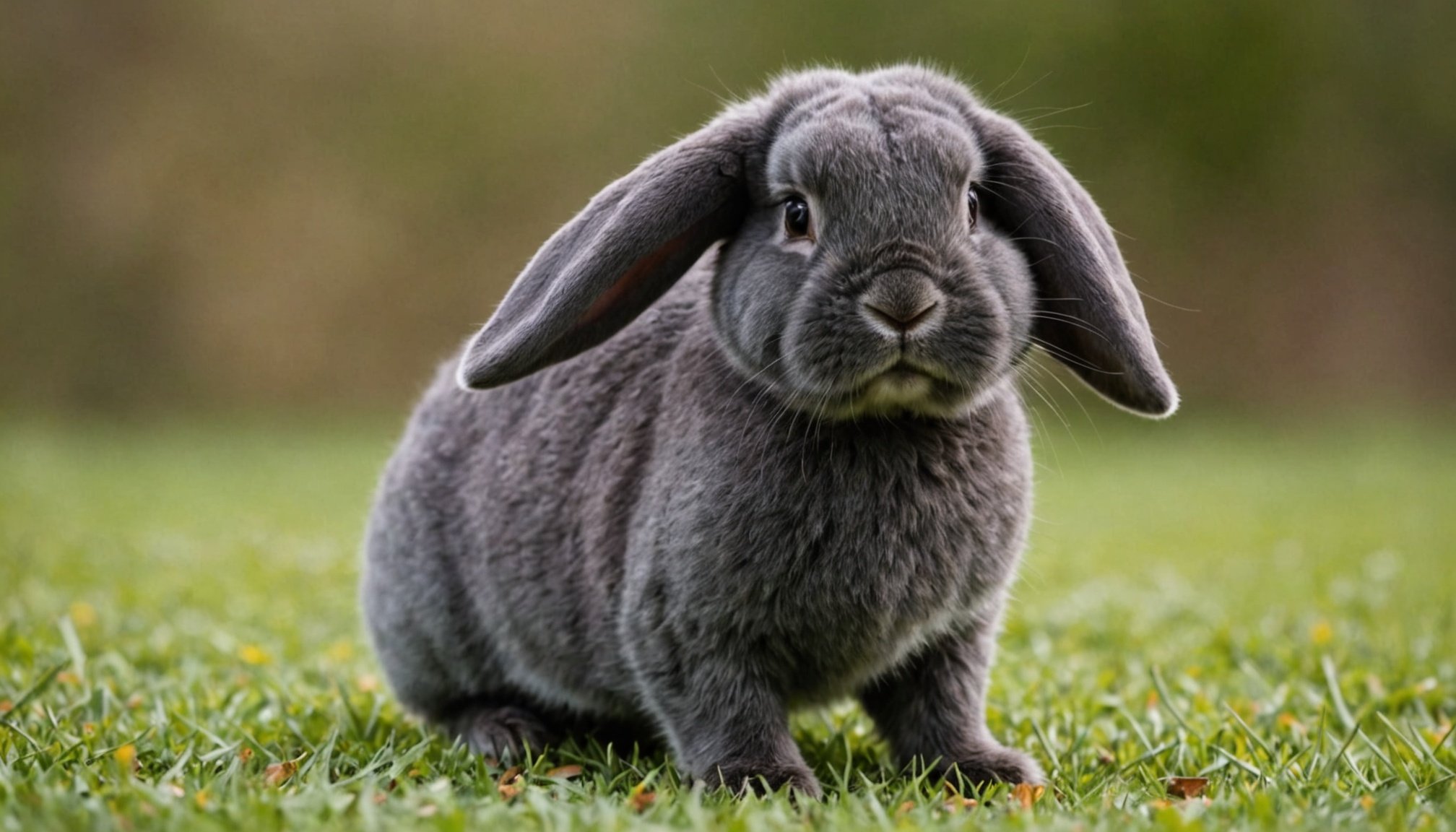Understanding Your New Rabbit’s Behavior
Rabbits are fascinating creatures with rich social structures and distinct instincts. Understanding rabbit behavior is crucial to ensuring their well-being. Naturally social, rabbits establish important social bonds and hierarchies within groups. At home, your rabbit may express similar instincts, seeking interaction with both humans and other pets.
Recognising their body language is essential to interpreting their emotional states. For instance, a relaxed rabbit might flop onto its side, indicating comfort, whereas a tense posture with ears back can signal distress. Enjoying socialization means noticing subtle cues in rabbit communication.
Contrary to other pets, rabbits often communicate through soft sounds, subtle movements, and body language. Observing them closely can unveil insights into their state of mind. If your rabbit is stressed, you may notice repetitive burrowing or avoiding engagement. Understanding these signals not only aids in creating a safe environment but also fosters trust.
For a harmonious bond, familiarise yourself with their behaviour. Socialisation tips include offering time, space, and patience. Engage them with toys and respect their pace during interactions. In time, you’ll decipher their unique language, enhancing your shared communication and allowing for a deeper connection.
This might interest you : Nutrient-Rich Nutrition for Aging Ferrets: The Ultimate Guide to a Healthy Senior Diet
Essential Bonding Techniques
Building a strong bond with your rabbit begins with gradual and gentle interactions. Bonding with rabbits involves understanding their unique personalities and respecting their boundaries. Initially, rabbit training should focus on gaining their trust. Begin by sitting quietly near their habitat and allowing them to approach you, which helps build confidence and curiosity.
Using positive reinforcement is essential in encouraging desired behaviors. Treats and toys become powerful tools in the bonding process. Offer your rabbit small, healthy treats when they exhibit calm and friendly behavior. Incorporate toys that encourage exploration and engagement, tailoring these to your rabbit’s preferences.
The significance of patience in building trust cannot be overstated. Sometimes, rabbits may exhibit hesitancy or fear initially. Maintaining a calm and gentle demeanor can soothe your rabbit, allowing them to feel secure. Over time, your persistent but gentle efforts will foster a lasting connection.
Adapting your techniques to your rabbit’s response is crucial. Some rabbits may eagerly engage with toys, while others may prefer quiet bonding activities. Recognising these preferences and adjusting accordingly can significantly magnify the bond you share, transforming your interactions into meaningful experiences.
Essential Bonding Techniques
Building a strong bond with your rabbit involves patience and understanding of their unique behaviours. Start by gradually introducing yourself to your rabbit’s space. Allow them to explore at their own pace, maintaining a calm and relaxed atmosphere. Bonding with rabbits necessitates time and consistent interaction.
Incorporate positive reinforcement when training your rabbit. Offering treats as rewards is an effective way to encourage good behaviour. Rabbits, like most animals, respond well to food rewards, which can be used to engage them in playful activities. Toys also play a crucial role in bonding. Select toys that stimulate curiosity and movement, encouraging them to interact and associate you with fun experiences.
The role of patience cannot be understated. Developing trust is a gradual process, so remain patient and gentle as your rabbit acclimates to new surroundings and people. Handling them softly and respecting their boundaries promotes a sense of safety.
Consistently applying these techniques helps in forming a deep connection, providing your rabbit with a sense of security and companionship. Remember, building a relationship with your bunny is a journey that unfolds over time, rewarding both you and your furry friend.
Creating a Stimulating Environment
Designing a suitable rabbit habitat is crucial for mental and physical health. An enriched environment keeps your rabbit engaged and active. Key elements include plenty of environmental enrichment options such as tunnels, chew toys, and platforms. These items cater to a rabbit’s natural instincts, promoting exploration and play.
Ensure the habitat offers a safe space where your rabbit can retreat and feel secure. This private area should be easily accessible and free from excess noise and disturbances. It’s essential for reducing stress and preventing overstimulation through the day.
Introduce a range of engaging toys to stimulate curiosity and encourage movement. Rotating toys regularly can also boost interest levels and prevent boredom. Consider toys that mimic natural activities like digging boxes or treat puzzles designed to nurture mental sharpness.
Creating a balanced environment for your rabbit involves more than just providing toys. Their habitat must support their social needs alongside promoting physical challenges. Allow for supervised interaction where your rabbit can safely explore outside their primary area. This not only enriches their daily experience but enables them to form a bond with their surroundings, ultimately enhancing overall well-being.
Socialization Practices
Integrating your rabbit into family life can be a rewarding experience for both the rabbit and the family. Successful rabbit socialization involves gradual introductions and patience. Begin by allowing family members to sit quietly near the rabbit’s safe space, letting your rabbit approach first. This fosters a sense of security and willingness to engage.
Facilitating social play is essential for developing strong bonds. Use toys that encourage interaction and exploration, like tunnels and chewable items, to make playtime a shared activity. Keep interactions positive and fun, but always be mindful of your rabbit’s comfort levels. Recognize signs of distress such as thumping or hiding, which indicate a need for a break or space.
Understanding and respecting personal boundaries is crucial to building trust with your rabbit. Observe your rabbit’s body language to identify when they are comfortable or when they need distance. Adjusting your approach based on these cues demonstrates empathy and strengthens your bond.
Incorporating these strategies can enhance the overall well-being of your rabbit by providing opportunities for meaningful connections while ensuring that their individual needs are respected. Balance social interaction with time for solitary exploration to maintain a harmonious household dynamic.
Overcoming Common Challenges
Navigating the challenges of rabbit aggression and fearfulness requires a keen understanding of these complex creatures. It is crucial to identify signs early, such as growling, biting, or rigid posture, which may indicate stress or fear. Recognizing these cues allows for prompt intervention, preventing escalation. Addressing fear-based behaviors involves creating a calm environment and establishing trust through gradual exposure to new experiences.
Start by gradually familiarizing your rabbit with changes in their surroundings. Utilize soft voices and gentle movements, reinforcing positive interactions with treats. Consistency and patience are paramount; sudden shifts can intensify fear and discomfort. This technique can help alleviate anxiety and promote a sense of security.
Transitional challenges often surface during socialization processes with new owners or other animals. Implementing routines can structure their environment, fostering predictability and reducing stress. Engage in problem-solving by slowly introducing changes, reducing potential triggers of aggression.
Rabbit owners can significantly enhance their pets’ comfort by tailoring activities to suit their unique temperaments. By patiently working through these challenges, you ensure a harmonious home where your rabbit can thrive, ensuring their well-being is prioritised.
Ensuring Safety During Interaction
Ensuring rabbit safety during interactions is paramount. Handling rabbits properly requires a gentle touch to prevent injuries. When picking up your rabbit, support their hindquarters firmly with one hand while the other gently cradles their chest. This technique maintains balance and minimises stress. It’s crucial not to lift rabbits by their ears or scruff, as this can cause pain and damage delicate structures.
During playtime, vigilance is key. Safe play involves ensuring the environment is free from hazards like loose wires or small objects that could be ingested. Consider designating a specific area for your rabbit’s exploration, ensuring it’s well-supervised and confines potential risks. Using playpen setups creates a controlled space that encourages freedom while maintaining security.
Monitoring interactions with other pets further contributes to a harmonious household. Always introduce rabbits to new pets gradually. Supervise initial meetings to observe any signs of distress or aggression, such as thumping or evasive movements. Separating pets momentarily can prevent overwhelming situations, ensuring peaceful coexistence.
By being mindful of these safety strategies, you foster an environment where your rabbit can explore and interact confidently, enhancing their quality of life. This proactive approach ensures long-term well-being and contentment for your furry friend.

